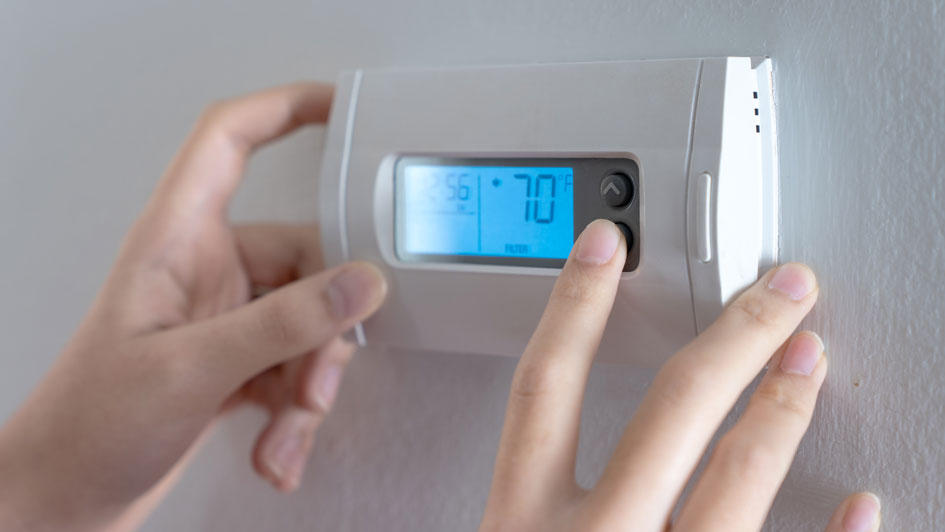
Everyone’s always looking to save money on their utility bills, but you should know there’s a way to lower energy use, even when you're not even home.
It starts with your thermostat. By making the most out of your thermostat, you can tailor the temperature to your needs. This means establishing various temperature settings for when you’re at home, away or even when you’re sleeping.
By trying a few of these schedules, you can enjoy comfy temperatures while keeping more money in your pocket. Check out our guide on how your thermostat doesn't have to use up all your summer spending money:
While at Home
Whenever you're at home, you want a nice range of pleasant temperatures. That’s why it’s best to set your thermostat lower in the summer if you're indoors to make the most of the cool air.
But in terms of energy efficiency, the best range for when you're in your home during the summer is actually around 78 and 80 degrees Fahrenheit. By adjusting things a few degrees, you can stay cool while still lowering your monthly energy bill.
While Gone
If you're setting the temperature for a vacation or other trip away from the house, it’s advantageous to set the thermostat higher than normal.
If your home is in a shady spot in a cooler climate, you can set the temperature as high as 88 degrees while no one is home before lowering it back to the sweet spot of 78-80 degrees once you're home again. This way, your air conditioning unit won’t be working overtime to provide cooling for a bunch of empty rooms.
While Sleeping
When it comes to sleeping in the summer, you want a temperature that's nice and cool. You should try and keep things between 68-72 degrees Fahrenheit. You won't have to worry about getting too hot or too cold when you are trying to get some rest.
Other Ways to Use Less Energy:
- Smart thermostat installation: Switching to a smart thermostat in the summer helps save money on energy costs as it forms temperature schedules according to your lifestyle and personal preferences. They can lower the temperature while you are home or sleeping, before allowing it to get warmer when the house is empty. With reliable brands like the Lennox iComfort, you have the ability to remotely access and change the temperature through your smartphone, tablet or laptop. Planning smart thermostat installation in your Port St. Lucie home is an effortless way to set the correct temperature no matter where you are.
- Update your existing HVAC system: Upgrading your HVAC system is another great option for long-term energy savings. If a system boasts high energy efficiency, lower utility bills won't be far behind since it requires less energy to heat and cool your home. Air conditioning installation in Port St. Lucie is a breeze for experienced professionals like True Temp.
- Schedule annual AC maintenance: Hiring a skilled professional to perform regular air conditioning maintenance in Port St. Lucie can have a serious effect on your total monthly energy use. By regularly cleaning the coils, checking for damage and keeping vents clear of dust and debris, you may notice your HVAC system perform better during day-to-day use.. More efficient operation reduces strain on the unit and lowers operational costs, lowering total energy use and eventually the total monthly bill.
- Clean or replace the air filter on a regular basis: A regular schedule for cleaning or replacing the HVAC system's air filter saves money by keeping airflow as smooth and consistent as possible. When filters become clogged, an AC unit has to work harder, and the strain can reduce the system’s life span and cause breakdowns.
- Check your attic insulation: Insulation is one of the key components in any energy-efficient home, keeping the hot air outside and the cool air inside over the summer. The North American Insulation Manufacturers Association (NAIMA) offers an official recommendation stating homeowners in souther states should install at least 13-14 inches of insulation, while those in northern U.S. states should have 16-18 inches.
- Check your ventilation: A leak in the air ducts could increase your energy bills much more than 20 percent, plus it can potentially allow harmful emissions from your water heater, clothes dryer and other appliances to get into the atmosphere of your home. Watching for signs of leaks and sealing them can address both concerns.
- Seal all other leaky spots in your home: Sealing up other leaks in your home with caulk, foam sealant or weather-stripping helps keep things cooler during those hot summer days. It’s also important to check for any gaps around windows, doors and even outdoor fixtures. Devoting time and effort to sealing leaks now can help you save a lot in the long run.
